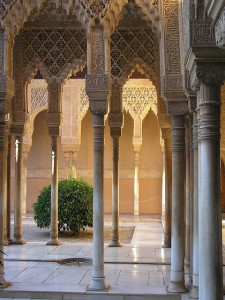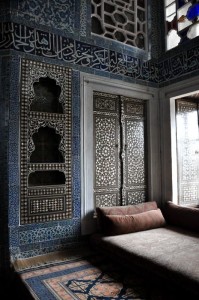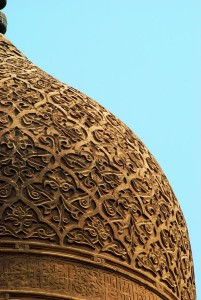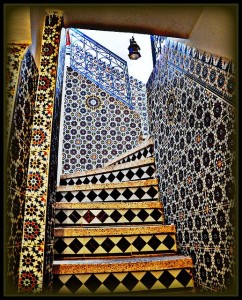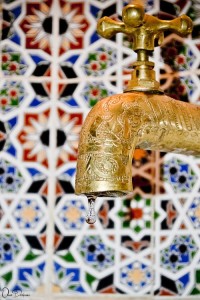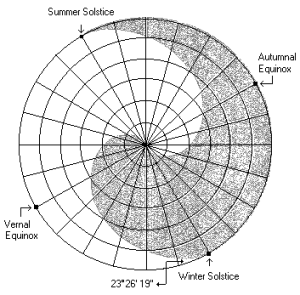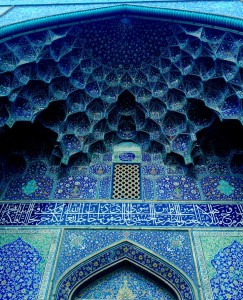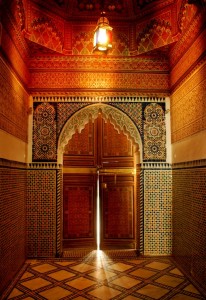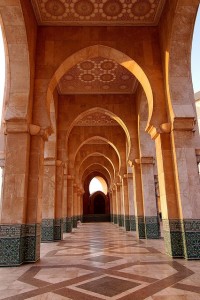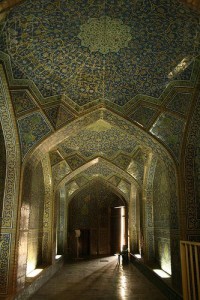The Book of Enoch (Idris): Revelation, Maarifa and Black Holes
The Prophet Idris (saws) like Rasul Allah (saws) went on a Miraj of Heaven, but where Rasul Allah (saws) was shown the unseen (quantum) aspects of the universe, Idris was shown space itself, the outer surface of this Universe.
“They know but the outer surface of this world’s life, whereas of the ultimate things they are utterly unaware.”
The prophet Enoch (Idris) said in the book of Enoch “I saw the paths of the angels”, Allah said in the Quran “By the heaven full of paths”(51:7), “And We have created above you seven paths, and never are We unmindful of (any of Our) creation” (23:17).
Allah said about the prophet Enoch (as) “And the same blessing was bestowed upon Ismail and Idris and Zul-Kifl, because they all practiced fortitude.”(21:85)
“And remember Idris in the Book; he was indeed very truthful, a Prophet. And We lifted him to a lofty station”.(19:56-57)

Idris (saws) was one of the earliest prophets Allah sent to mankind before the prophet Nuh (saws), with Him Allah originated writing and other technical arts of civilization including the study of astronomical phenomena. The purpose of His journey was to teach him first hand the significance of the heavenly bodies for later generations, to inspire in them their study and He reported in detail what He saw. His words were unique because they are not like someone on earth looking up at the stars wondering and guessing what it all means they are definite and to the point from a persons experience.
The Book of Enoch (Idris) is divided into passages, parchments that have survived are estimated to date from 300 BC in the earliest passages to 100 BC in the later, as no complete single record survived to date, this means they are records of an earlier time of man on earth.
The book is not part of the biblical canon accepted by Christians or Jews because the accounts of Enoch (saws) in the book, such as a dark void existing beneath the earth was considered to fantastic to be true. The Book of Enoch has the same issues of historicity as both the Bible and Torah, it is a translation of a translation which causes great trouble when studying the text in a finite manner. In some places tampering with the text is clear and passages have been inserted by someone else because the text switches perspectives at time but they are rare.
Having said that because it was not accepted by Christians and Jews into their canon there was far less incentive to tamper with it over the years and most of it is the literal word of the prophet Enoch (saws) himself, unlike the bible which contains mostly the words others, this very clear from the words of the prophet.
Any muslim scholar who reads it with an understanding of language will notice immediately one thing about the language of Enoch himself, which the Bible hardly contains, He (saws) speaks like the Prophet Muhammad (saws) and many of his prayers (Dua) to Allah would almost mimic those of Rasul Allah (saws) himself and are just as refined and beautiful. It stands out very clearly that these are the words of a prophet, as well as in his attitude and behaviour towards things and one can even see the sunnah of our prophet (saws) through him.
Even if the translators of the book did not understand that his actions are the actions of a prophet (saws), just like it is very clear for us when we read ahdith it can still be seen, all this is preserved in spite of the mistranslation and tampering issues.
Beyond these issues the book speaks about fallen Angels and other matters which are translated according to interpretation by christians, while it is clearly mentioned these Angels are Shaytan and his tribe when they disobeyed Allah. Iblis belonged to a tribe of Jinn who where granted the same honor, responsibility and power of Angels on earth, but they corrupted themselves and fell from this status, needless to say much can be clarified because Islamiclly we more detail regarding the story and nature of these beings than previous scripture who only had fragments of events.
The first part of the Book of Enoch describes the fall of the Jinn (Watchers, also referred to as Angels just like Allah in the Quran when he honoured them) who fathered the Nephilim (Half Jinn Half Humans, many ahadith speak about such things). The remainder of the book describes Enoch’s visit to Space in the form of travels, visions and dreams, and revelations.
Because the Book wasn’t accepted by the Church every copy in Europe was burnt during it’s dark ages and it was thought lost until it was rediscovered in the 17th century. Many modern translation have been made but the earlier are clearly more superior, later translations suffer from the same fate as the NIV Bible, they seem to have been translated by an atheist who hadn’t grasped the idea that words must have meaning, and so you can read entire passages whose meaning is lost because the translator is to afraid to admit the prophet (saws) could have said anything of scientific merit.
Here are three accounts of a Black Hole the prophet Idris (saws) was shown, it should be remembered that no detailed concept of space existed in 300BC when the work is dated or even earlier when the Prophet (saws) actually lived, so the simple idea of traveling through space was alien to mankind let alone the fact was in a dark void. It required humanity to build the Hubbell telescope before we could see the accuracy of the prophets (saws) description.
(Source: The following was taken from a documentary about the Book of Enoch, which uses an older translation of the work).
This account is taken from the book of Enoch 1 Chapter 1:
The Prophet Idris (saws) said, “And i came to an empty place and i saw there neither a heaven above (no sky or atmosphere) or an earth below but a chaotic and terrible place (the black hole), and there i saw seven stars of heaven bound together in it like great mountains and burning with fire (He was no longer in our solar system, this is a description of His nearness to the stars and their destruction by the black hole) at that moment i said (to the Angel) for which sin are they bound, for what reason where they cast in here then one of the holy Angels Uriel who was with me guiding me spoke to me and said to me, Enoch for what reason are you asking and for what reason do you question and exhibit eagerness, these are among the stars of heaven which have transgressed the commandments of the lord (literally strayed from their path in space) and are bound in this place until the completion of 10 million years according to the number of their sins (the stars were circling the black hole because they strayed from their path), i then proceeded from that area to another place which is even more terrible (a larger black hole) and i saw a terrible thing a great fire that was burning and flaming the place had a cleavage which extended to the last sea, pouring out great pillars of fire, neither its extent nor its magnitude could i see nor was i able to estimate, what terrible opening is this place and a pain to look at”.

“Then Uriel one of the holy Angels who was with me responded and said to me Enoch why are you afraid like this i answered and said i am frightened because of this terrible place and the spectacle of this painful thing and he said unto me this place is the prison house of the Angels (meaning the devil Jinn) they are detained here for ever”. (End of passage)
To appreciate the prophets description we have learn about black holes. A black hole is the final stage of a star, if the star had a mass of at least three times our sun, some black holes are much larger having the mass of millions or billions of suns, there isn’t any limit to how massive they can become, especially if they are well fed by stars near the centre of a galaxy, a super massive black hole such as those believed to lurk at the centre of radio galaxies tend to spew out huge pillars of radiation some as far as six thousand light years, or even more. Our entire galaxy is only about 100 light years across so the two ascending and descending pillars of radiation could add up to a total of 12 thousand light years across, a supermassive black hole would be surrounded by stelar and interstellar material, such as dust and other stars, one example of a black hole having captured a star is cygnus x1, the star seems to be orbiting nothing at all but is in fact loosing much of its mass in its fatal attraction to the black hole.
A black hole has at its centre what is called a singularity which has an incredible mass and infinite gravitational pull, so great is its pull that the space around it is bent to infinity and even light can not escape, everything that passes a certain point, called the event horizon, is doomed, it is the threshold beyond which there is absolutely no possibility that anything could escape and is a one way street. The material that surrounds it forms a white hot spiralling feature called an accretion disk in some cases this accretion disk can outshine the entire galaxy a hundred fold, it is paradoxical, but even though no light can escape from a black hole it’s accretion disk can be extremely bright.
Now that we have the basics of black hole’s we can understand what the prophet Idrsis (saws) said.
The empty place which is chaotic and does not have a heaven above or a earth below is outer space, space is almost completely empty and it can be called chaotic because there are, constantly at work, stellar cycles of birth and death.
There is no more up or down in space all directions are relative to one another, the great fire that was burning and flaming corresponds to the accretion disk that surrounds and feeds a black hole, the cleavage is the bending of space time to infinity, if one imagines space time as a rubber flat sheet this bending of time and space would resemble the kind of funnel that would be the result of a long stick pushing down the centre of the sheet stretching it, the bending is so extreme and the forces so vast that science doesn’t even have the physics to describe it, all the laws of physics break down and it is believed unknown laws of quantum gravity take over.
Time and space literally go out of existence in a singularity, it is an ending point an infinitesimal boundary to the universe. The last sea is the singularity, to the new physics of quantum gravity this singularity is somehow a seething mass of something called quantum foam, it is chaotic and not well understood as of yet but it would correspond nicely with the description of a sea, since a sea is both fluid and somewhat chaotic, the immense pillars of fire would correspond to the immense radiation jets that spew out from it in both directions perpendicular to the accretion disk.
The fact the prophet Idris (saws) goes on to state that he could neither estimate its extent nor it’s magnitude lets us know he could not see an end to it, and that the forces at work in it are infinite and impossible to describe.
Another account of this black hole is given in chapter 18 verses 10 -16:
The prophet Idris (saws) said, A place beyond the great earth where the heavens come together (they are endless with no sky, no beginning or end), and i saw a deep pit with heavenly fire on its pillars and i saw inside them descending pillars of fire that where immeasurable in respect of altitude and depth, on top of that pit i saw a place without the heavenly firmament above it or earthly foundation under it (it was floating in space), or water, there was nothing on it not even birds but it was a desolate and terrible place and i saw there the seven stars which where like great burning mountains then the Angels said to me this place is the ultimate end of heaven and earth it is the prison house for the stars and the powers of heaven and the stars which role over upon the fire (get trapped in the black hole) they are the ones which have transgressed the commandments of God from the beginning of there rising (they followed a path in space destined to doom them in the black hole from the beginning of the Universe) because they did not arrive punctually (they followed a delayed path) and He was wrath with them and He bound them until the time of the completion of their sin in the year of mystery (an unknown number of years).

This is very literal a description of stars being swallowed up by a black hole dating back to 300BC and even further. The fact this place is beyond the great Earth firmly establishes its location in outer space, the deep pit is the infinite bending of time and space that occurs beyond the event horizon, again the pillars are the radiation jets that pour out of a black hole. The fact that stars are in orbit is an indication that they are captured by it and the image of the stars rolling, correctly reflects the fact that stars rotate as they orbit a black hole.
A third account of the black hole is found in chapter 108 verse 336:
The prophet Idris (saws) said, For there is not ground there, as is upon the earth, i also saw something that is like an invisible cloud, and though i could see that it (the black hole) was completely dark yet i could see the flame of its fire because it was burning brightly and there where somethings like bright mountains which formed a ring around it and where sweeping to and fro then i asked one of the Angels who was with me saying to them what is this bright thing for it is not a heaven but merely the flame of a fire which is burning and a voice of weeping crying and lamenting as well as strong pain and he said unto me this place which you see into it shall be taken the spirits of sinners blasphemers those who do evil and those who alter all the things the lord has done through the mouth of the prophets all of which have to be fulfilled (the black hole is Jahanam, Hell).
The prophet mentions again there is no ground here, and the invisible cloud could be referring to interstellar dust and gas, these would obscure his ability to see clearly, it is truly amazing that he said it was completely dark but he could see the flame of its fire because it was burning brightly, the black hole itself would be completely dark and the accretion disk would be burning brightly. Scientist have always known that the only way we could see a black hole would be indirectly by seeing a star in orbit around it or by an accretion disk, the thing like bright mountains (the hump of the accretion disk) forming a ring around it (the black hole) they made the stars sweep to and fro, the stars are clearly in orbit around the black hole.
The knowledge contained in the words accurately describes a black hole both in its structure and its function, this establishes the accuracy of his account, we notice at first his description of it is from a distance, from a vantage point where he views it all at once, he sees the pit then the heavenly fires on its pillars, he could see that there was nothing but empty space both above and below it, he then is able to describe the outer parts of the accretion disk in detail beginning with the dimmer outer edge of gas and interstellar debris which he likens to an invisible cloud.
He then notes the contrast between the inner disk and the hole itself by saying that it was completely dark but that it was burning brightly, he then is able to make out individual stars that surround it most notable the seven stars of heaven which the Angels tell him are bound in it, until judgment is passed upon them, then he proceeds to the region of the event horizon, there he describes the most horrific aspect of this place as a bottomless pit, the first thing he describes here is the great fire which is even more terrible than what was previously mentioned which was burning and flaming.
As the material spirals ever close to the centre it heats up to an imaginably high temperature, the cleavage would be the region around the event horizon where the fabric of space time gets bent to infinity, this is also precisely the place where the great pillars of fire are said to be pouring out, the immense radiation jets seem to hover just above this region, emitting powerful x-rays from the white hot disk material, here he also notes thats its size and power are infinite by saying neither its extent (which is the infinite bending of space time), nor its magnitude, and the power of its event horizon “could i see (into the darkness) nor was able to estimate”, He then tells the Angel who was taking him on this journey that the spectacle of this painful thing which frightens him, is the ultimate end of heaven and earth, again space and time as we know it go out of existence inside a Back hole.

Black Hole with Stars orbiting it.

Actual Picture of a distant black Hole.

Black Hole with Jets that dwarf the black hole itself.


